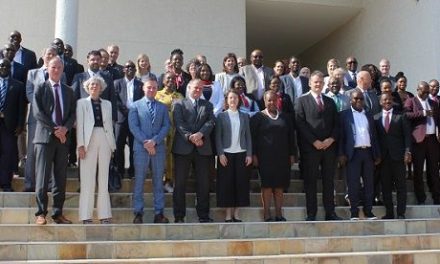
Household food security weakens
The Ministry of Agriculture Wildlife and Forestry (MAWF) says that although the regions in Namibia noted improvement in agricultural production last season, such improvement was not significant. According to the ministry most households interviewed, said last season’s harvest is weakening and is currently being supplemented with market purchases to make it last longer. Households noted that, with market purchases to supplement, their little harvests are likely to last up to December or January 2015. However, some households reported that, they have already finished last season’s harvest and now sorely depend on market food.
Contrary to the general picture in the northern region, the household food security situation in the Zambezi region, is said to be satisfactory as most households are either dependent on their own harvest or from the market, using funds from the sales of last season’s production. MAWF Public Relations Officer Margret Kalo said that although the Zambezi region noted below average harvest, the harvest was near normal (15%) and many farmers were satisfied with the harvest, saying that it will bring the much needed relief on their livelihoods. However, much of the harvest (mainly maize) was sold to commercial millers as well as Agricultural marketing Trade Agency (AMTA), leaving very few at the farms for household consumptions. “Although it is common practice for farmers to sell almost all maize grains to the millers and buy it back in the forms of meals, it was reported that farmers do so in fear of damages by pests due to lack of proper storage at their farms.” In the Kavango East and Kavango West regions, household food security was noted to be satisfactory as the majority of households interviewed indicated that they are dependent on their own production, supplemented with market purchases for food access. According to household owners, last season’s harvest is expected to last till end of December, thereafter, most households are likely to be completely dependent on the market for food access. “The food security situation in the north central regions (Oshikoto, Oshana, Ohangwena and Omusati) was noted to be more or less the same as Kavango East and West regions. In the Omusati region, household food security is satisfactory as most households are reported to be still dependent on own production supplemented with market purchases to prolong the availability of stock. However, according to households, their own production is expected last till end of January, thereafter most households will be dependent on the market for food access”, said Kalo. On the other hand, food security situation in Ohangwena region was reported to be satisfactory only in the east where the majority of households are still dependent on own production for food access, but weakening in the west part of the region where most households are reported to have depleted last season’s harvest and are now dependent on the market for food access. For the Oshana region, household food security is also reported to have weakened slightly as most households indicated that their harvests from last season are diminishing and are currently being supplemented with market purchases to prolong its availability. In the Oshikoto region, the situation is reported to be satisfactory as most households interviewed are still dependent on their own production. However, few households indicated that, their harvests from last season are diminishing and are being supplemented with market purchases.













































